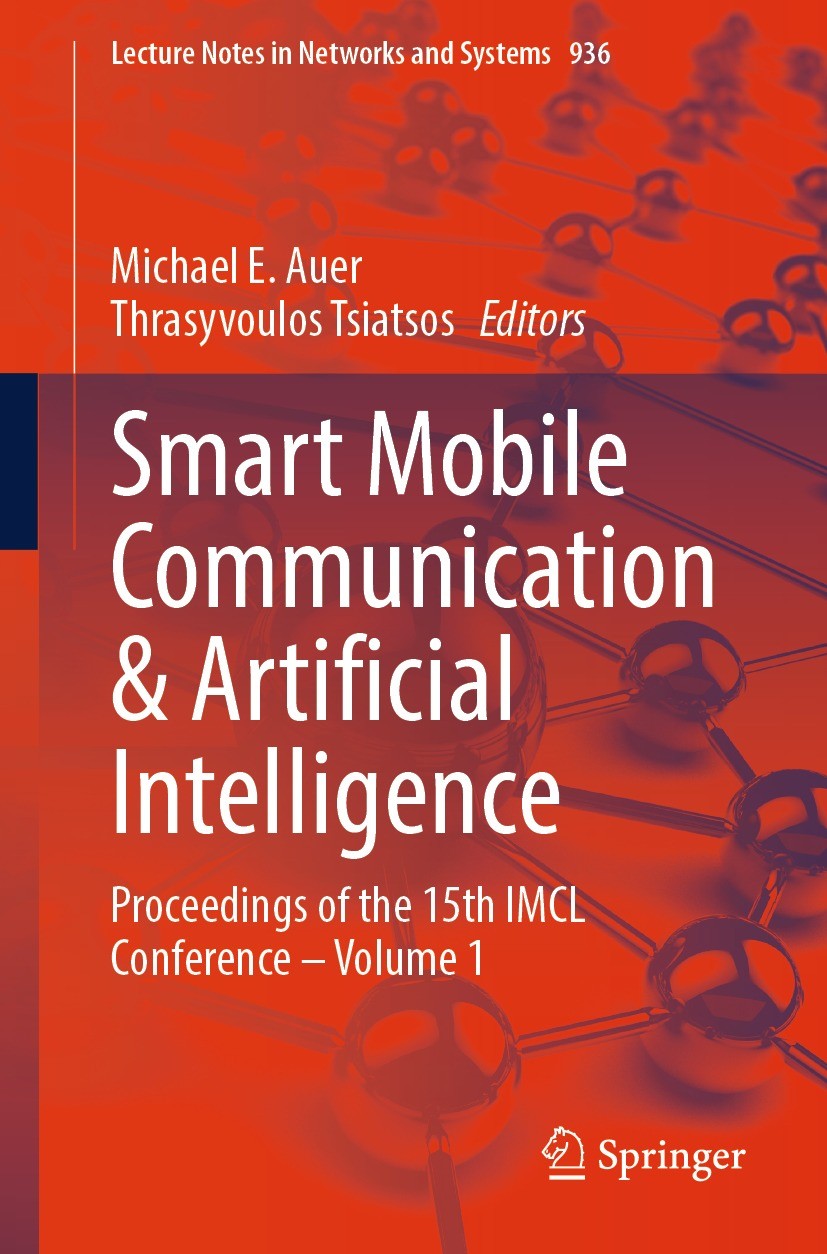| 书目名称 | Smart Mobile Communication & Artificial Intelligence |
| 副标题 | Proceedings of the 1 |
| 编辑 | Michael E. Auer,Thrasyvoulos Tsiatsos |
| 视频video | http://file.papertrans.cn/869/868889/868889.mp4 |
| 概述 | Is the proceedings of the 15th International Conference on Interactive Mobile Communication Technologies and Learning.Covers aspects of mobile learning as well as emergence of mobile communication tec |
| 丛书名称 | Lecture Notes in Networks and Systems |
| 图书封面 |  |
| 描述 | .Interactive mobile technologies are today the core of many—if not all—fields of society. Not only the younger generation of students expects a mobile working and learning environment. And nearly daily new ideas, technologies, and solutions boost this trend...To discuss and assess the trends in the interactive mobile field are the aims connected with the 15th International Conference on Interactive Mobile Communication, Technologies, and Learning (IMCL2023), which was held 9–10 November 2023...Since its beginning in 2006, this conference is devoted to new approaches in interactive mobile technologies with a focus on learning. Nowadays, the IMCL conferences are a forum of the exchange of new research results and relevant trends as well as the exchange of experiences and examples of good practice. .Interested readership includes policy makers, academics, educators, researchers in pedagogy and learning theory, schoolteachers, learning Industry, further education lecturers, etc.. |
| 出版日期 | Conference proceedings 2024 |
| 关键词 | Interactive Mobile Technologies; Mobile Communication; Mobile Learning; Lifelong Learning; Virtual Envir |
| 版次 | 1 |
| doi | https://doi.org/10.1007/978-3-031-54327-2 |
| isbn_softcover | 978-3-031-54326-5 |
| isbn_ebook | 978-3-031-54327-2Series ISSN 2367-3370 Series E-ISSN 2367-3389 |
| issn_series | 2367-3370 |
| copyright | The Editor(s) (if applicable) and The Author(s), under exclusive license to Springer Nature Switzerl |
 |Archiver|手机版|小黑屋|
派博传思国际
( 京公网安备110108008328)
GMT+8, 2025-12-14 21:06
|Archiver|手机版|小黑屋|
派博传思国际
( 京公网安备110108008328)
GMT+8, 2025-12-14 21:06


